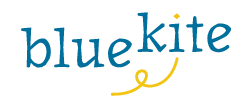This past weekend, I attended Social Slam for the third straight year. This year was extra special because I had the distinct honor of joining the stage as a speaker!
I was thrilled to participate in a panel discussion with Chris Craft, Kerry Gorgone and Valentina Escobar-Gonzalez about getting started with social media. We didn’t have slides or a formal presentation, but rather a discussion about building social media programs that get results for businesses and organizations.
If you weren’t able to attend (or even if you did and want some notes), here’s a rundown of our tips from the session and some highlights from the other sessions as well.
Your guide to getting started with social media
1. Start with a plan.
One of the biggest reasons business fail with their social media efforts is that they dive in without a building a social media strategy or plan.
If you want social media to benefit your business, you must take time to determine what you want you want to get out of your social media efforts. To do that, answer these questions to help determine the best approach for your business.
2.
Start small.
If you’re just getting started with social media, resist the urge to be engaged on every single network right out of the gate. If you do, you run the risk of spreading yourself too thin and potentially abandoning your efforts.
Pick one or two social media channels to get started. Once you master those, you can always add to it if it makes sense for your business (and if resources allow for it.). If you’re not sure which social networks to start with, use the questions in this post to help you evaluate the various social media channels.
3.
Use tools to manage your efforts.
There are a number of tools that can help you manage your social media efforts. Everyone on the panel offered up a number of recommendations:
- Hootsuite
& Sprout Social — post updates across various networks, schedule posts, reports & analytics. - Buffer — schedule posts across Twitter, Facebook and LinkedIn.
- Google Alerts or Talkwalker — manage mentions of your brand and find content on topics relating to your brand.
You can find additional recommendations in Kerry’s excellent post about low-cost social media management tools, and her follow-up post that includes a few more options. Additionally, here are some other tools to help you schedule social media updates.
4. Save time with scheduling and automation.
To use Chris’ words, “automation is not evil.” There are ways you can automate or schedule your social media efforts to save time. As mentioned above, you can use tools like Buffer and Hootsuite to schedule posts to various social networks.
Chris also recommended checking out IFTTT (If This Then That), a tool that automates all sorts of actions based on various recipes you set up. For example, Chris has used it to automatically send out a “good morning” message on his social channels every day. Here are some additional recipes and ideas for using IFTTT.
However, a word of caution – automation can be bad if handled poorly. There are a few things you should keep in mind to make sure you automate social media the right way. After all, automation should never replace engagement.
5. Own up to mistakes.
 Mistakes happen. And when they do, the best thing you can do is to own up to it.
Mistakes happen. And when they do, the best thing you can do is to own up to it.
For instance, it’s really easy to send out a personal tweet or update to a business account instead. That’s exactly what happened to the American Red Cross a couple of years ago when an employee accidentally tweeted to the Red Cross account about getting drunk while drinking Dogfish Head beer.
Although the Red Cross deleted the tweet, they admitted the error in a good-natured manner saying, “We’ve deleted the rogue tweet but rest assured the Red Cross is sober and we’ve confiscated the keys.”
And, to top it all off, Dogfish Head used this opportunity to encourage donations to the Red Cross.
You can read more about it here.
6. Choose social media managers carefully.
Although our panel had varying opinions about outsourcing your social media efforts, we all agreed that you should carefully choose the person or team for this duty. After all, whoever manages your social media accounts is representing your brand.
Whoever you choose — an employee, intern, consultant or agency — must thoroughly understand your company’s strategic objectives and brand voice. Additionally, the social media team should have regular communication with your company and have access to the answers they need to quickly respond to fans and followers on social accounts.
7. Test post frequency to find the right balance.
There’s no right answer when it comes to the frequency of updates on your social networks. Much of this depends on the time and resources available to your social media team and what makes sense for your audience.
Although you don’t want to inundate your fans and followers, remember that most people won’t see every item you post. Scheduling posts throughout the day will help you reach more of your audience.
Also, research to see when your audience is online and how often they want to be communicated with. For instance, you can use Tweriod to analyze your tweets and determine the best time to tweet. Once you get started, you should get a good feel for what’s working.
8. Get inspiration from others.
Although you have to choose the social media approach that’s right for your business or organization, you can still get ideas by following others who are using social media well.
Here are a few businesses or organizations mentioned during our discussion that you can check out for best practices:
- Convince & Convert — fantastic blog content (including ebooks, podcasts, etc.)
- United Way — follow their Facebook and Twitter accounts to see messages from their president, photos and new programs.
- Jeni’s Splendid Ice Creams — excellent use of photos on Instagram & videos on Vine.
- Clio — legal case management that does a great job of bringing in customer stories on their blog.
- Nashville Ballet* — uses social media to target influencers, invite them to special shows and leverage their networks to sell tickets. Learn more about this here.
*I didn’t mention this one during the talk, but meant to!
For additional suggestions from our panel,
check out Valentina’s
post about
social media
suggestions for non-profits
or Chris’ post about
building a successful digital agency. And, if you want to know what it was like to attend Social Slam, Kerry’s post offers an excellent play-by-play of her experience.
9. Behavior creates community.
 In addition to our panel, there were a number of fantastic speakers throughout the conference. I won’t cover them all here, but there were some golden nuggets that are worth mentioning for businesses getting started with social media.
In addition to our panel, there were a number of fantastic speakers throughout the conference. I won’t cover them all here, but there were some golden nuggets that are worth mentioning for businesses getting started with social media.
Jason Falls discussed the power of community. Mark Schaefer was the driving force behind Social Slam and it was successful because he had taken the time to build a thriving community of people.
The reason Mark was able to create this community is because he put in the time to build relationships and create something bigger than himself.
If you want to create a community around your brand, great products or services alone won’t cut it. It’s your behavior that creates community.
10. Create value for your audience.
Jeff Bullas came all the way from Australia to share his wisdom about blogging best practices. He offered up a number of mechanics to get more out of your content.
However, if I were to sum it up, I would say the most important thing is to make sure you create incredible value for your audience. The secret is creating content that informs, inspires, entertains and educates your readers, fans and followers. If you focus on that, the rest will fall into place.
11. Listen before you engage.
During a fireside chat on social media engagement, Rick Wion from McDonald’s said that their social media team spent three months monitoring conversations about their brand before they started engaging.
What they discovered was a lot of complaints about their products, so they decided to bring in their customer service team to help manage their social media efforts.
Now, when someone complains, they respond and sometimes offer up coupons that say “You Tweeted. We Listened.” As a result, many customers take pictures of the coupon and share it and it turns around the conversation. Approaching their social media effort in this way has made a huge impact on McDonald’s ability to recover and retain customers.
12. Data is the linchpin to differentiation.

According to the Tom & Tamsen Webster, “why?” is the most important question you can ask about your brand. Taking the time to understand why people buy your stuff (or not) can make a huge difference in your marketing and social media efforts and help you better stand out in the marketplace.
For instance, Tamsen offered up the example of Burger King. By offering everything that their competitors have on the menu, they look more like the competitors and don’t stand out that way.
Once you understand the “why”, you can create stories and messages around that to help people connect with your brand.
13. Get clarity about your one true thing.
Before building your social media presence, you must determine your “one true thing” that makes you utterly different.
John Janstch shared a story about a janitorial company that discovered their employees had a “dreaming problem”. After all, no one wants to be a janitor. People typically have that job while aspiring to be something else.
So, they created a managerial arm of the company focused on helping people find and reach their dreams. As a result, their turnover has significantly decreased and the company has grown exponentially.
What they discovered was that they were a “dreaming company” disguised as a janitorial company. Once they determined that, all of their marketing and messaging could be built around that idea.
If you’re new to social media, do you have any questions that weren’t covered here? If you are a social media pro, what tips would you add to this list? Do you have any notes from Social Slam that you would include?



2 replies on “13 Tips for Getting Started with Social Media”
Hi Laura! Thanks for the mention in this post – we’re always glad to see the #gettngslizzerd faux pas used as a learning moment. Appreciate the kind words as well. 🙂 Have a great week!
Hi Gloria – Thanks so much for taking the time to stop by. I love using that story in speaking engagements. It’s a great example of how to turn a mistake into a positive. You and your team handled it brilliantly! Well done!
Laura